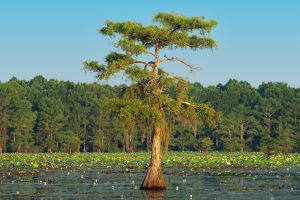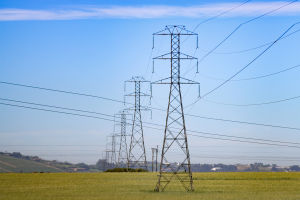
Do you know, Lykkers? Wetlands are not just beautiful landscapes—they are essential ecosystems that support both environmental health and human well-being.
However, wetlands worldwide are being lost at an alarming rate due to urban expansion, agricultural practices, and climate change.
Protecting wetlands is no longer just an environmental concern but a matter of improving our quality of life!
1. Protecting Wetlands for Cleaner Water
One of the most important services wetlands provide is water purification. Wetlands act as natural filters by trapping pollutants like heavy metals, pesticides, and excess nutrients from agricultural runoff. They remove harmful chemicals from water before it reaches rivers, lakes, and aquifers, which are often used for drinking water. To help protect our wetlands and ensure clean water:
Minimize pollution: Reduce agricultural runoff by promoting sustainable farming practices, such as reducing pesticide use or implementing buffer zones around wetlands.
Support wetland restoration projects: Participate in or donate to local wetland restoration efforts to help replenish and maintain these crucial water filtration systems.
2. Wetlands as Flood Control Systems
Wetlands are natural sponges that absorb excess water during heavy rainfall or storms. This capacity significantly reduces the risk of floods by slowing down and storing water. With protecting wetlands, communities can safeguard themselves against the growing threat of flooding. Here are ways to harness this natural flood control:
Restore wetland vegetation: Planting native vegetation in wetland areas helps improve water retention and flood mitigation. Native plants have deep roots that absorb water more effectively than non-native species.
Support coastal wetland conservation: Coastal wetlands, such as salt marshes and mangroves, act as buffers against storm surges and rising sea levels. Supporting efforts to preserve these habitats can protect coastal communities from increasingly intense storms.
3. Supporting Biodiversity and Ecosystem Services
Wetlands are rich in biodiversity, supporting thousands of species, including migratory birds, amphibians, and aquatic life. Many species rely on wetlands for breeding, feeding, and shelter. In fact, wetlands are home to around 40% of the world’s species, yet they occupy only a small fraction of Earth’s surface. Here's how to help:
Create wetland-friendly policies: Advocate for local and national policies that protect wetland areas from development and pollution.
Participate in citizen science: Join efforts like local bird watching or amphibian monitoring programs to help track and protect the wildlife in wetlands.
4. Boosting Human Health and Well-Being
Spending time in nature, particularly in wetland areas, has been shown to improve mental health and reduce stress. Wetlands offer tranquility and beauty, making them ideal places for recreation and connection with nature. Moreover, healthy wetlands contribute to a stable climate, reducing the impacts of climate-related health risks. Here's how to make the most of wetland spaces:
Support eco-tourism: Eco-tourism around wetlands promotes appreciation for these areas while also generating funds for conservation efforts. Participating in or supporting such initiatives ensures that wetlands are preserved for future generations.
Promote wetland education: Educating local communities about the importance of wetlands can foster a greater sense of responsibility toward preserving these environments. Schools and local groups can take part in wetland clean-up and educational programs.
5. Economic Benefits of Wetland Protection
Wetlands are not only vital for ecological and public health but also provide significant economic value. They contribute to industries like fishing, tourism, and agriculture. In fact, wetlands offer services that save economies billions annually, such as water purification, flood prevention, and carbon storage. To leverage these benefits, consider the following:
Invest in wetland-friendly infrastructure: Encourage the construction of sustainable infrastructure that supports wetland conservation. This includes building around rather than over wetlands and implementing low-impact development techniques.
Support sustainable fisheries: Protecting wetland ecosystems, communities ensure the long-term viability of fish populations, which many rely on for food and livelihoods.
6. Advocacy and Policy Action
The preservation of wetlands often requires policy intervention. Governments play a pivotal role in creating and enforcing regulations that protect wetland areas. Citizens, local businesses, and organizations can advocate for policies that prioritize wetland conservation. Here's how you can get involved:
Engage with local government: Attend town hall meetings and push for stronger wetland protection policies, including zoning laws that restrict construction near wetland areas.
Support international conservation efforts: Global initiatives, like the Ramsar Convention, aim to protect and sustainably manage wetlands around the world. Support or get involved in such efforts to help preserve wetlands on a global scale.
Wetlands are invaluable to human well-being, providing clean water, flood control, and essential biodiversity. The services they offer contribute directly to public health, economic stability, and environmental sustainability. As the world faces climate change and rapid urbanization, protecting wetlands is more important than ever. Together, we can protect wetlands and improve our quality of life!
Wetlands Can! Campaign | WWT
Video by WWT


